
This lesson is designed to help students learn to access health care on their own.
- Subject:
- Health, Medicine and Nursing
- Material Type:
- Lesson
- Lesson Plan
- Author:
- Sexuality Education Open Learning
- Date Added:
- 08/04/2022

This lesson is designed to help students learn to access health care on their own.

This lesson is designed to help students learn to access health care on their own.
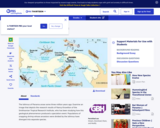
These images from the Smithsonian Institution depict Nancy Knowlton's work with snapping shrimp in Panama. Knowlton found that the closing of the isthmus -- dividing the Pacific Ocean from the Caribbean -- resulted in new species of shrimp.
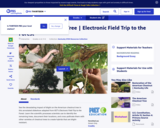
This annotated slideshow adapted from KET's Electronic Field Trip to the Forest illustrates how blight decimated the American chestnut tree and the methods scientists use to identify and pollinate the remaining trees to create blight-resistant trees.

Students will learn about the basics of sexual and reproductive anatomy, as well as periods and menstrual care. This lesson is not intended to be divided by gender. We recommend all students learn together, as there is value in understanding all body types and functions, additionally this practice can help students de-stigmatize the natural variations in bodies and experiences.

This lesson provides a brief overview of sexual and reproductive anatomy, and explains how to complete self exams of breasts and testicles. It reviews the basics of reproduction, and introduces the many ways of becoming parents. The final activity asks students to consider the many responsibilities of becoming a parent.

The introductory topics will cover various approaches to the study of animals and their behavior. Key concepts in studies of animal behavior, emphasizing ethology, are covered in class and in the assigned readings from Scott (2005), supplemented by selections from other books, especially from classics in the field as well as selected videos. Next, key concepts in sociobiology are covered using readings from Alcock (2001), supplemented by selections from additional books and some video presentations.
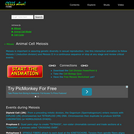
Meiosis is important in assuring genetic diversity in sexual reproduction. Use this interactive animation to follow Meiosis I (reduction division) and Meiosis II in a continuous sequence or stop at any stage and review critical events.
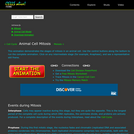
This animation demonstrates the stages of mitosis in an animal cell. Use the control buttons in the upper left to run the complete animation. Click on any intermediate stage (for example, Anaphase), and see a representative still frame.
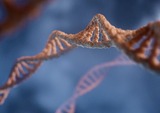
This lesson presents an overview of the role of genetics, breeding, and reproduction in animal agriculture. Learners will become familiar with fundamentals of genetics, complete a Punnett square, understand phenotypes and genotypes, identify parts of reproductive systems, and discuss breeding systems used in the animal industry. This represents a portion of the Introduction to Agriculture, Food, and Natural Resources (AFNR) series in Nebraska middle and high school agricultural education.

This class examines how anthropology and speculative fiction (SF) each explore ideas about culture and society, technology, morality, and life in “other” worlds. We investigate this convergence of interest through analysis of SF in print, film, and other media. Concepts include traditional and contemporary anthropological topics, including first contact; gift exchange; gender, marriage, and kinship; law, morality, and cultural relativism; religion; race and embodiment; politics, violence, and war; medicine, healing, and consciousness; technology and environment. Thematic questions addressed in the class include: what is an alien? What is “the human”? Could SF be possible without anthropology?

This video segment explores the benefits and pitfalls of cloning as a means of reproduction. From Evolution: "Why Sex?"

Binary fission, budding, mitosis, fragmentation, parthenogenesis and sexual reproduction.

This resource is a video abstract of a research paper created by Research Square on behalf of its authors. It provides a synopsis that's easy to understand, and can be used to introduce the topics it covers to students, researchers, and the general public. The video's transcript is also provided in full, with a portion provided below for preview:
"Two mosquito species in America have been engaged in a battle for dominance for the past 30 years: the native Aedes aegypti and the invasive Aedes albopictus -- also known as the Asian tiger mosquito The tiger mosquito has a distinct competitive advantage Male Aedes albopictus are really good at wooing female Aedes aegypti The resultant interspecies mating permanently sterilizes the female, effectively ending her reproductive future But Aedes aegypti are evolving the ability to resist the advances of Aedes albopictus Although this is good news for Aedes aegypti the outlook is darker for humans, as Aedes aegypti are key transmitters of diseases like Zika and dengue fever Researchers have now started to uncover the genetic changes tied to this resistance Uncovering the molecular correlates governing mosquito mating preferences could lead to better control strategies and might help prevent future outbreaks of disease Burford Reiskind, et al..."
The rest of the transcript, along with a link to the research itself, is available on the resource itself.

Biology is designed for multi-semester biology courses for science majors. It is grounded on an evolutionary basis and includes exciting features that highlight careers in the biological sciences and everyday applications of the concepts at hand. To meet the needs of today’s instructors and students, some content has been strategically condensed while maintaining the overall scope and coverage of traditional texts for this course. Instructors can customize the book, adapting it to the approach that works best in their classroom. Biology also includes an innovative art program that incorporates critical thinking and clicker questions to help students understand—and apply—key concepts.
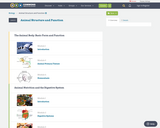
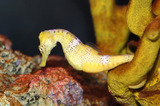

By the end of this section, you will be able to:Describe advantages and disadvantages of asexual and sexual reproductionDiscuss asexual reproduction methodsDiscuss sexual reproduction methods
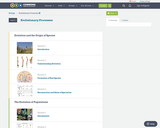
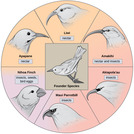
By the end of this section, you will be able to:Define species and describe how species are identified as differentDescribe genetic variables that lead to speciationIdentify prezygotic and postzygotic reproductive barriersExplain allopatric and sympatric speciationDescribe adaptive radiation